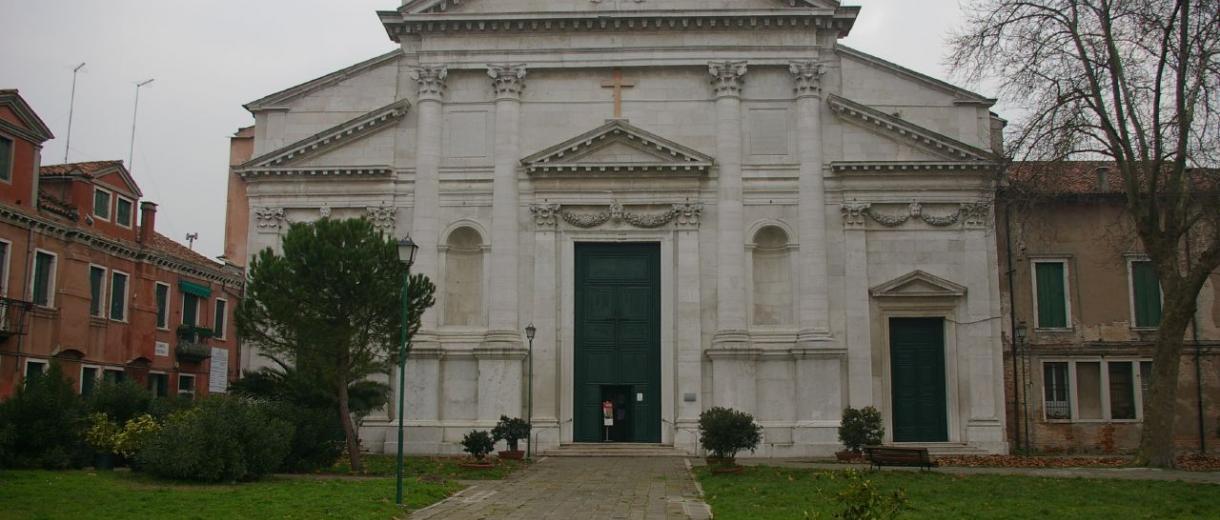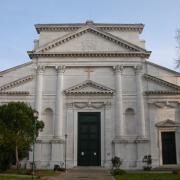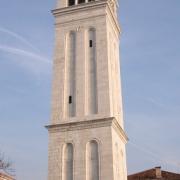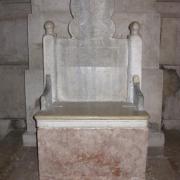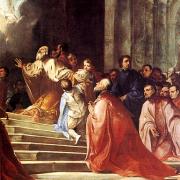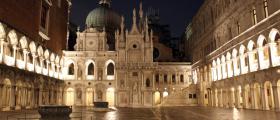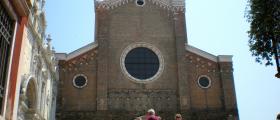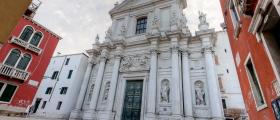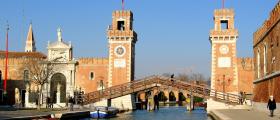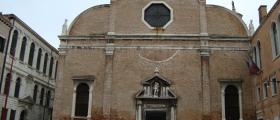Saint Peter's Basilica in the Castello District
The Basilica of San Peter in the Castello District, co-cathedral of the city together with Saint Mark’s Basilica, lies just a few steps from the Arsenale, in the north-east extremity of Venice. The area where the Basilica is located is often ignored by the majority of tourists as they usually stop around Saint Mark’s and Rialto. The structure is unique and beautiful and we suggest you to go there for a walk to admire it in all its splendour.
The Basilica rises on the island of Olivolo (inhabited by a small community lately included in Venice). It was inaugurated in the VII century and consecrated by the bishop San Magno of Eraclea. At the beginning, the Church was dedicated to the Byzantines Sergio and Bacco, and only in 814 was dedicated to Pietro dal Vescovo Orso Partecipazio.
The Basilica was completely rebuilt in 1120 because of a fire that destroyed the former one. The new structure was definitely larger and majestic, and included also a baptistery (destroyed) dedicated to John the Baptist. The present architecture of the Basilica dates back precisely to this project: the plan was composed by a nave and two aisles with a tripartite façade and circular apses.
During the following centuries the structure was restored several times. The last important works on the building dates back to the end of the XV Century and at the beginning of the XVI. In this period (namely in 1451) the Patriarchate of Grado was suppressed and moved right here in the Dioceses of Castello with the note of Pope Niccolò V.
Between 1508 and 1526 ceilings, vaults, pavements, furniture, decorations and all the minor chapels were restored (the whole restoration was decided by the Patriarch Antonio Contarini). Andrea Palladio worked inside the Basilica, too: here Andrea Diedo in 1598 started his career with his first work in the city of Venice, however never carried out.
The façade is to be assigned to Francesco Smeraldi (1596) on behalf of Patriarch Lorenzo Priuli. The bas-relief is a work by the sculptor Marsili, in classic style. It represents Charity decorating the façade and it dates back to 800.
The Basilica became co-cathedral of the city when, in 1807, Saint Mark’s Basilica lost its role of State Church. The Patriarchate was then moved in Saint Mark’s, and to Saint Peter’s Basilica other tasks were assigned. From that point on the Monastery was closed down and transformed into a powder magazine.
The inside of the Basilica has a Latin-plan scheme, obviously one nave and two aisles, each of them sustained by three arcades. For each nave there is an altar. The dome of the church lies at the junction with the transept (it was damaged by some bombs during the First World War).
The High Altar, inside which are preserved the remains of the first Patriarch of Venice, San Lorenzo Giustiniani, dates back to 1646. The opera, painted by Baldassarre Longhena, was carried out by Clemente Moli. To be mentioned is also the XVI Century organ of the Dalmatian organ-player Pietro Nachini.
Inside the Cathedral there are many works of art of inestimable beauty and importance from an historical point of view. Worth mentioning are Saint Peter’s Throne, a marble throne that tradition says it belonged to the apostle. The back is made from an antique Islamic funerary stone that brings back to some verses taken from the Koran. The left aisle is enriched with: a bas-relief dating 1675 from Michele Ungaro, the altar piece from Luca Giordano (1650) representing the Madonna and Child and the Holy Souls, and from a mosaic altar piece by Zuccato (in Lando’s Chapel).
The cardboard over which this opera is made could be assigned to Jacopo Tintoretto. The are much more paintings inside the Basilica that cannot be forgotten: Supper at Emmaus (of Pietro Malombra and Antonio Vassilacchi) on the left wall of the portal; some operas by Veronese dating 1585 (they are between the two chapels); the “Immaculate” by Giovanni Maria Morlaiter (XVIII Century); the opera by Padovanino “The Martyr of John the Evangelist and the Supper at Simon by Jacopo Beltrame (XVI Century).

